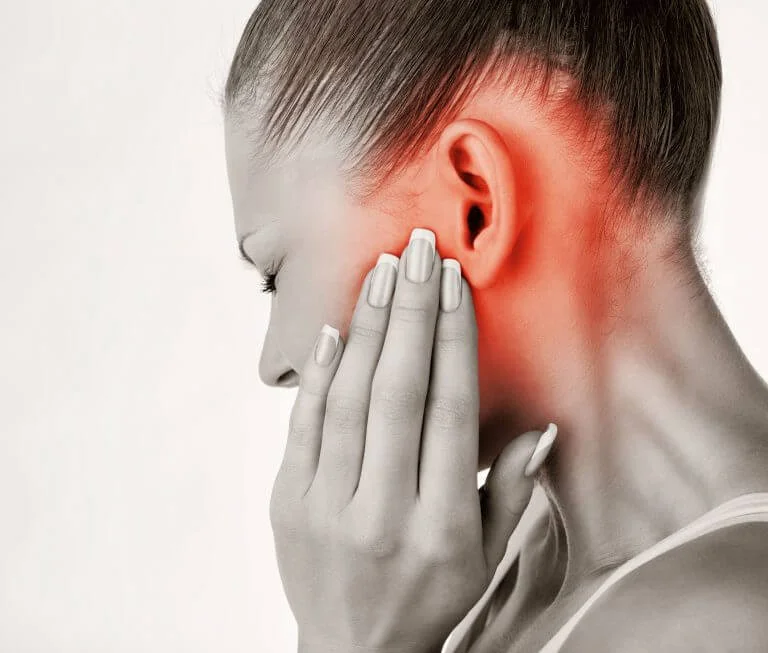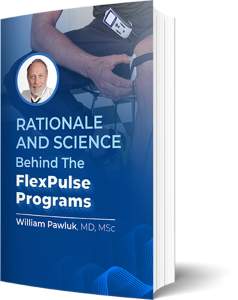Pulsed electromagnetic field (PEMF) therapy for tinnitus has been found to be effective in reducing tinnitus symptoms. Let us learn how PEMF therapy benefits tinnitus and review the available research studies and trials. This information should be useful for anyone experiencing tinnitus and should certainly be researched by audiologists and occupational therapists today.

Tinnitus & Hearing Loss
The National Institute on Deafness and Other Communication Disorders (NIDCD) estimates roughly 10% of the United States adult population in 2008 has experienced tinnitus lasting at least 5 minutes. Since excessive exposure to loud sounds is a major cause of tinnitus, it can be expected that this estimate from 2008 is likely to have grown significantly. This will have been made worse by the use of personal electronics, such as boomboxes, earphones and headsets. With rapid growth in the manufacturing and farming sectors, occupation-related hearing loss and tinnitus affects millions worldwide. When it comes to the entertainment industry, the problem is worse and affects not only the staff but also the customers. Teenagers and youngsters are especially vulnerable to tinnitus and hearing loss due to loud sound exposure. And, the damage can last a life time.
A newer more dangerous threat to our hearing is the use of mobile phones. We not only stress our ears by the sound exposure but also the ultra-high frequency electromagnetic radiation that cell phones emit can be dangerous1. The risks are even worse when a mobile phone is used mostly on one side of the head. If you’ve been using a mobile phone for more than 10 years, you should get your hearing tested for hearing loss, if it’s not already obvious!
PEMF research on Tinnitus
Tinnitus is defined as ringing or buzzing heard in the ears. PEMF therapy could potentially prevent tinnitus and hearing loss. Pulsed electromagnetic fields can be applied to the ears by using a wearable or portable PEMF device.
Beyond its use for treating tinnitus and preventing hearing loss, PEMFs have many other uses. They can provide pain relief in ear aches, and limit ear infections. Neurologists have found benefit in using PEMF therapy for stroke rehabilitation as PEMF has been research proven to enhance cellular regeneration and improving brain function. PEMFs have also been found to enhance tissue2 and cartilage regeneration and prevent aging related muscle and bone loss.
The application of pulsed electromagnetic fields to the head is known as Transcranial Magnetic Stimulation (TMS). This is usually done in the professional setting using uncomfortable and expensive, rigid figure-of- 8 or helmet-type devices that limit the possibility of daily use. In the home setting, PEMF therapy is easier to apply as you could simply place a PEMF coil on, inside or under a pillow and sleep on it. A strong portable PEMF device, applied directly near the ear, should work just as well, and, in fact, provide better results as you could use it everyday.
Tinnitus can be caused by a problem within the ear itself or, more often, resulting from problems in the auditory center of the brain. That’s why most studies have been targeting and studying the effects of brain stimulation using PEMF therapy to treat tinnitus. But, because pulsed electromagnetic fields have cellular regenerative effects, they can be especially helpful for tinnitus caused by problems within the ear itself, whether from injury, inflammation, infections or allergies.
Scientists from departments of clinical neuropsychology, ENT and Psychiatry at the University of Turku in Finland recently conducted a randomized 6-month trial and follow-up study to determine whether coil placement was important in getting results3, and found that it was not a key factor of the treatment. Similarly in our experience, what matters more is intensity and time of exposure. Magnetic fields by their very nature will transmit energy to tissues and stimulate oxygen production, reduction of inflammation and self-repair.
A recent experiment in Germany showed that pulsed magnetic stimulation combined with additional auditory stimulation (to test the response) was able to reduce the loudness of ringing4. While this study was very specific it shows that there are means and technology to measure the effectiveness of PEMF therapy for tinnitus. Further research is on-going now to learn how different areas of the brain should be stimulated for more controlled clinical treatment of tinnitus5.
In 2012, a study by the Department of Otolaryngology, Capital Medical University in Beijing evaluated 5 trials totaling 160 patients and found no risk from magnetic stimulation for chronic tinnitus and also concluded that it should be a new therapeutic tool6.
Another study from 2014 in Turkey with 60 patients found low-frequency TMS is useful in treatment of tinnitus7.
In 2015, scientists from Department of Clinical Neurophysiology, Weill-Cornell Medical College, New York and Non-invasive Brain Stimulation Laboratory, Burke Medical Research Institute treated a patient with chronic tinnitus and found that it helped reduce symptoms by more than 60%8. The journal Electromagnetic Biology and Medicine published a comparison study of TMS applied to different parts of the brain. The study found that daily treatment with 1 Hz had significant beneficial effects9.
Conclusions
Research evidence clearly shows benefit in applying PEMF therapy for tinnitus and it is possible to manage chronic tinnitus with PEMF therapy. Worldwide, there have been hundreds of studies and trials on applying magnetic stimulation for tinnitus. However it’s important to note that results differ based on age and condition of patients as well as many studies have a very limited scope when it comes to trying different frequencies (why 1 Hz in most studies?), intensities and magnetic stimulation equipment itself in most cases. Generally, higher intensity PEMFs applied over longer periods of time produce better results.
Routine, PEMF therapy to the ears should be tried, it feels calming as the tinnitus ringing reduces. We’re at a point where PEMF is the answer to a wide range of problems that can be solved because of the broad scope of actions, safely, and tinnitus is certainly one of those.
PEMF for Tinnitus & Hearing Loss – Research References
-
1.Velayutham P, Govindasamy GK, Raman R, Prepageran N, Ng KH. High-Frequency Hearing Loss Among Mobile Phone Users. Indian J Otolaryngol Head Neck Surg. December 2011:169-172. doi:10.1007/s12070-011-0406-4
-
2.Aragona S, Mereghetti G, Lotti J, Vosa A, Lotti T, Canavesi E. Electromagnetic field in control tissue regeneration, pelvic pain, neuro-inflammation and modulation of non-neuronal cells. J Biol Regul Homeost Agents. 2017;31(2 Suppl. 2):219-225. https://www.ncbi.nlm.nih.gov/pubmed/28702986.
-
3.Sahlsten H, Holm A, Rauhala E, et al. Neuronavigated Versus Non-navigated Repetitive Transcranial Magnetic Stimulation for Chronic Tinnitus: A Randomized Study. Trends Hear. 2019;23:2331216518822198. doi:10.1177/2331216518822198
-
4.Engel S, Markewitz R, Langguth B, Schecklmann M. Paired Associative Stimulation of the Temporal Cortex: Effects on the Auditory Steady-State Response. Front Psychiatry. 2017;8:227. doi:10.3389/fpsyt.2017.00227
-
5.Schecklmann M, Lehner A, Gollmitzer J, Schmidt E, Schlee W, Langguth B. Repetitive transcranial magnetic stimulation induces oscillatory power changes in chronic tinnitus. Front Cell Neurosci. 2015;9:421. doi:10.3389/fncel.2015.00421
-
6.Peng Z, Chen X, Gong S. Effectiveness of repetitive transcranial magnetic stimulation for chronic tinnitus: a systematic review. Otolaryngol Head Neck Surg. 2012;147(5):817-825. doi:10.1177/0194599812458771
-
7.Yilmaz M, Yener M, Turgut N, Aydin F, Altug T. Effectiveness of transcranial magnetic stimulation application in treatment of tinnitus. J Craniofac Surg. 2014;25(4):1315-1318. doi:10.1097/SCS.0000000000000782
-
8.Labar D, Cortes M, Edwards D. Long-term repetitive transcranial magnetic stimulation therapy: new research questions arising from one tinnitus case? BMJ Case Rep. 2014;2014. doi:10.1136/bcr-2014-207203
-
9.Kim B, Kim D, Kim S, Kim J, Baek S, Moon I. Comparison of the outcomes of repetitive transcranial magnetic stimulation to the ipsilateral and contralateral auditory cortex in unilateral tinnitus. Electromagn Biol Med. 2014;33(3):211-215. doi:10.3109/15368378.2013.801353

